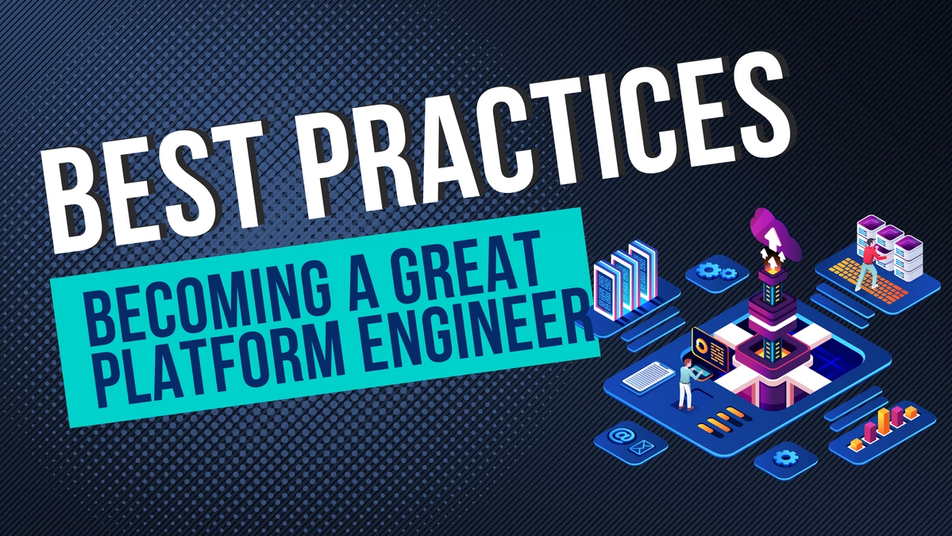Platform Engineering Roadmap: Best Practices You Need To Know

Platform Engineering (3 Part Series)
- Platform Engineering Versus Devops
- Platform Engineering Roadmap: Best Practices You Need To Know
- Benefits of Platform Engineering
In our previous blog post, we explored how cultivating a customer-centric mindset can help you become a better platform engineer. Now, let's delve into the practical implementation of this philosophy by giving you a roadmap for platform engineering. We will cover the essential best practices that a platform engineering team should follow in order to be successful. Furthermore, we will assess the advantages of adhering to these platform engineering principles and their potential impact on your team's efficiency and effectiveness.
Roadmap To Follow For Platform Engineering
As a platform engineer, one of your main goals is to provide robust platforms that help the developers in your organization be more productive. To achieve this, you need a platform engineering roadmap that will guide your team towards success. Here are some recommended guidelines to follow when thinking about your dev platform:
- Self-Service Environments: Just as businesses offer user-friendly portals to their customers, platform engineers should provide developers with the ability to independently access what they need. This reduces the cognitive load and reliance on learning and installing additional tools (such as Terraform, Docker, etc.) or depending on other teams. Developers greatly appreciate the ability to easily develop and test their applications. Empowering them to launch environments which allow them to do this, without the need for assistance from other teams or long wait times, can significantly enhance efficiency!
- Golden Paths: In platform engineering, the notion of "golden paths" offers developers pre-defined workflows and solutions, akin to a customer service representative guiding customers through a seamless experience. By automating repetitive tasks like creating dev infrastructure and image builds and uploads, valuable time is saved and the risk of human error is reduced. This empowers developers to concentrate on their primary task of writing code, rather than being burdened by manual repetitive tasks. These pathways also assist the platform team in maintaining standardization and having governance over all the services provided. This becomes crucial in making sure you meet your organization's compliance standards!
- Better Collaboration: Microservices-based applications are hard to develop as a team by default because of their distributed nature. Platform teams need to be able to provide developers with the tools and processes that enable better collaboration between different teams. This can include features like preview environments, shared environments for development, and efficient workflows to facilitate seamless collaboration among not only developers but also developers and other teams like marketing, design, sales, etc.
These are three things which we feel should be on your roadmap when approaching platform engineering. Starting a platform team can feel like a daunting task but if you break it down into these three areas it can start to feel approachable. It doesn't matter if you're building your own solution or adopting an existing one, you need to make sure that it fullfills these three needs: consumable in a self service manner, automate repetitive talks by providing golden paths, allow developers to collaborate with each other.
If you're able to provide these three things to your developers then consider yourself to be on the right way towards your end goal!
Benefits of Following Platform Engineering Principles
Following the above platform engineering roadmap can bring a multitude of benefits to your organization as a whole. Just implementing the three things we discussed above can give the developers in your organization the following benefits:
- Enhanced Development Experience: Developers can concentrate exclusively on coding, free from the burden of operational and infrastructural complexities. This fosters greater job satisfaction, productivity, and overall workplace happiness. And everyone knows, happy developers write better code :)
- Lower Cognitive Load: By abstracting away the complexities of environment setup and streamlining workflows, platform engineers are able to relieve developers of the mental burden associated with these peripheral tasks. This allows them to focus their mental energy more effectively on creative problem-solving and coding, leading to higher quality work and innovation. The less they have to juggle between tasks the more energy they'll be able to give to existing ones.
- Faster Time-to-Market: With self-service environments, automated processes, and golden paths, developers can swiftly develop and test their applications. This results in increased development velocity, giving organizations a competitive edge. This often has a direct impact on customer satisfaction for companies.
- Cost Savings: By streamlining processes and automating tasks, platform teams can reduce the time and resources required for application development. This leads to significant cost savings for organizations in the long run. Having features like a Garbage Collector be a part of your platform can further help with minimizing savings.
- Better Collaboration and Teamwork: With better tools and processes, developers can collaborate more efficiently with each other. Additionally, platform features such as Preview Environments offer visibility into the development process for non-software development teams like product, marketing, sales, etc. This fosters stronger teamwork, effective communication, and ultimately results in better products for customers.
Conclusion
In conclusion, following best practices in platform engineering can have a positive impact on your organization's overall success. By implementing this roadmap of self-service environments, golden paths and promoting collaboration, you can create a development experience that is efficient, streamlined and makes developers more productive.
Playbook: learn more about development velocity and how platform engineering can make an impact
You can get started reaping all the benefits we discussed from today itself! Okteto was built with these platform engineering principles in mind and allows platform engineers to easily create self-service environments and provide golden paths to their developers. Try it out today by signing up for our free 30-day trial.
Platform Engineering (3 Part Series)
- Platform Engineering Versus Devops
- Platform Engineering Roadmap: Best Practices You Need To Know
- Benefits of Platform Engineering


 Arsh Sharma
Arsh Sharma